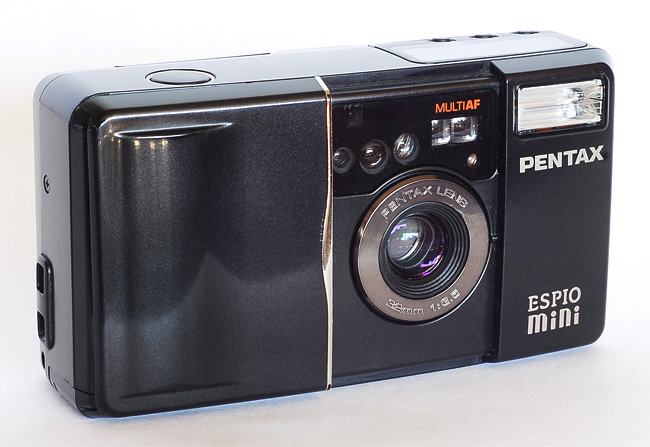 Have you ever had that anxiety dream — you know the one — where you show up for work or school and realize you forgot to wear pants? Embarrassing! My version of that dream is arriving at an amazing an place as it’s awash in otherworldly light, only to discover that I’ve forgotten to bring my camera. Don’t laugh — I’ve actually had that nightmare. Thankfully, my trusty Pentax Espio Mini prevents such a mishap from occurring in real life.
Have you ever had that anxiety dream — you know the one — where you show up for work or school and realize you forgot to wear pants? Embarrassing! My version of that dream is arriving at an amazing an place as it’s awash in otherworldly light, only to discover that I’ve forgotten to bring my camera. Don’t laugh — I’ve actually had that nightmare. Thankfully, my trusty Pentax Espio Mini prevents such a mishap from occurring in real life.
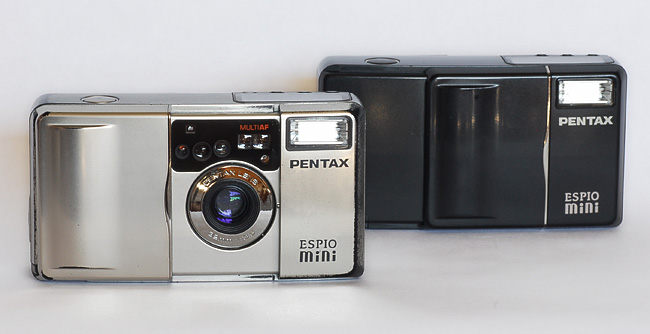
My original, well-traveled, sliver Espio along with a recent thrift-store acquisition in oh-so-pro, sexy black.
The Espio is my just-in-case camera. No matter if I’m just stepping out the door for a minute, I take it along because you just never know when you might see something amazing. Its diminutive size (41/8× 2¼ × 1½ inches) and minimal weight (195 grams, including battery and film) means it can live unobtrusively in my jacket pocket.
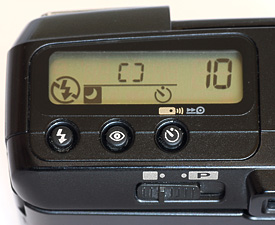
The camera's status is shown on a small, LCD screen. In this particular instance, the camera's flash is switched off and the self-timer is set. The film is on exposure #10.
The camera’s design owes a great deal to the classic, sliding clam-shell Olympus XA series. Like that legendary camera, opening the Espio’s lens cover switches on the camera and primes the shutter. Unlike the XA, however, the Pentax is purely point-and-shoot. It’s auto-focus, auto-loading, auto-film advance, auto-ISO, etc. The flash and a “B” (bulb) setting are the only functions the user controls. But the secret to working with a camera like this is to keep its limitations in mind.
I purchased my Espio in 1996 for about $200, after returning from London, where I had grown weary of carrying my SLR and its lenses everywhere. The Espio insinuated itself into my photography and for a period became my go-to travel camera. It remains one of my all time favourites not only for its take-along appeal, but mainly because it delivers wonderfully sharp, accurately exposed photos time after time.
It’s the Espio’s lens that really distinguishes it from the rest of the the point-and-shoot crowd. It’s a non-zooming, 32mm f/3.5 optic of remarkably high quality. The focal length works well for a lot of travel and scenic photography where a slightly wide-field lens is often more useful than a standard, normal lens of 50mm focal length. It also focuses down to a distance of only 1 foot — with viewfinder parallax correction to boot. That’s far closer than the Olympus XAs and a hair better than the highly regarded Olympus Sylus Epic. Like many camera from this era, the Pentax has a “panorama” setting that simply crops the top and bottom off a standard-width 35mm frame. I rarely use this feature, but there are some who really enjoy it.
One neat trick I discovered while traveling in Italy is that the optical axis of the lens is exactly perpendicular to the camera’s back. So what? So, when the Espio is placed on a flat, level surface, it’s pointed straight up. This came in very handy when I visited the Pantheon in Rome and wanted to get a shot of the building’s famous oculus. Fortunately, the point directly below the 30-foot-wide opening is marked on the floor. All I had to do was put turn off the Espio’s flash, set the self timer, and lay the camera on the floor to get a perfect shot of this neat feature. I used this same technique in many cathedrals too. As you can see from the photos below, the result are surprisingly good.
The best photos occur where opportunity and preparation intersect. The Pentax Espio’s pocketability means I always have the second half of that equation covered.

The elongated dome of S. Carlo alle Quattro Fontane, Rome. This masterpiece of Baroque architecture is the product of Francesco Borromini's troubled imagination. (Camera: Pentax Espio Mini; Film: Kodak Gold 400)
(For more Espio photos, check out Postcards From the Caribbean.)
Did you find this article interesting or helpful? If so, consider using this link the next time you shop at Amazon.com. Better yet, bookmark it for future use. Thanks to Amazon’s associates program, doing so costs you nothing yet helps keep this site up and running. Thanks!
For more of my camera reviews, click here.


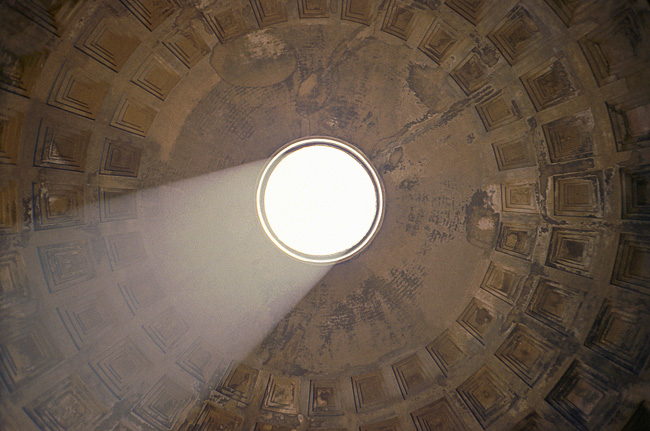
 Subscribe with RSS
Subscribe with RSS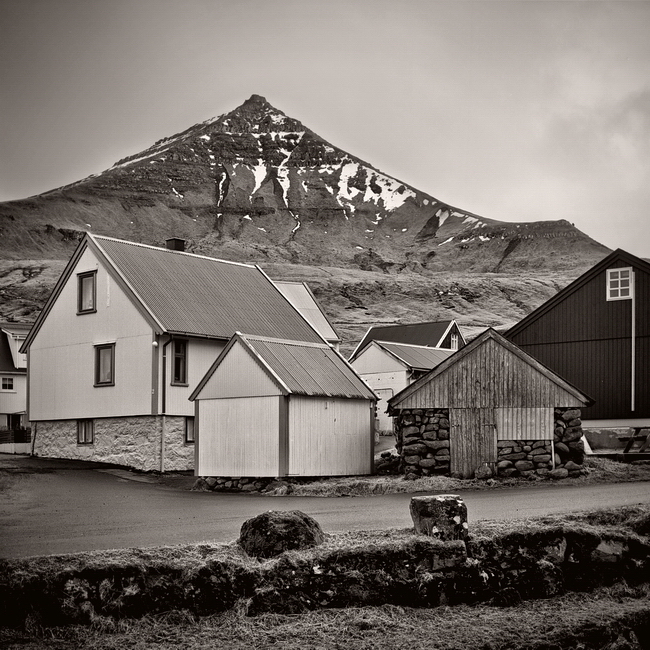
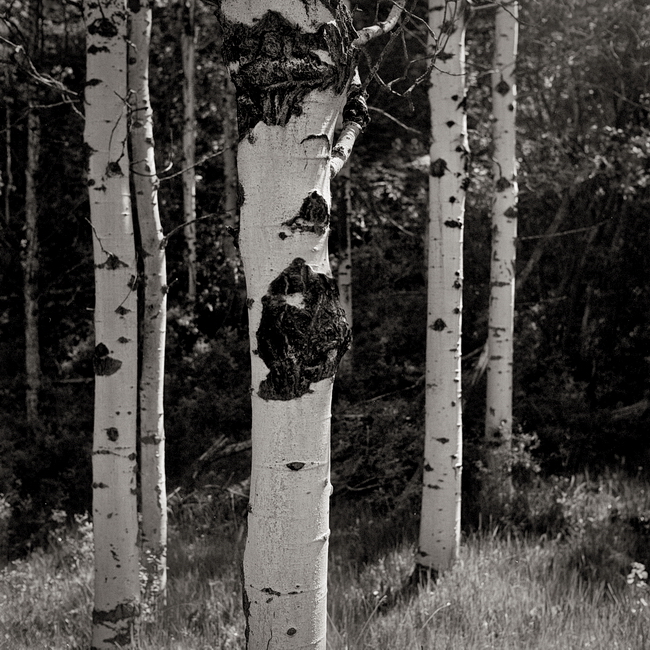


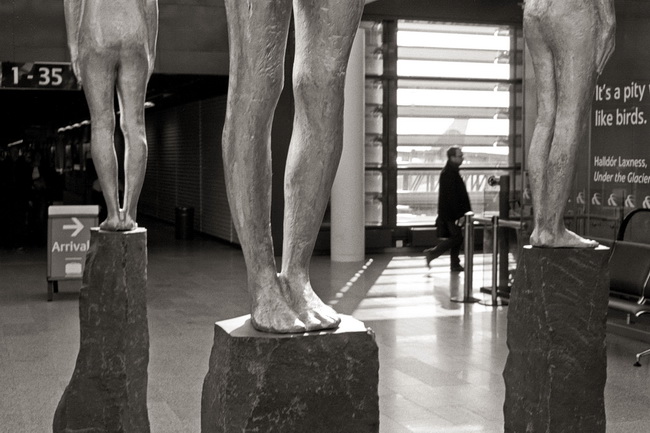





This camera looks amazing. It would be perfect for just sticking in your pocket and traveling around. Also great job on the site. I am a film photographer and this site is great!
Thanks Gavin. The Espio mini is a real winner and one that is seldom given its due, in my opinion. It’s definitely one to keep an eye out for when prowling thrift shops.
Hi Gary,
I’m interested in your thoughts regarding the quality of the lens vs. the olympus stylus epic (or mju-ii as I know it :))?
I ask, as having shot two rolls with one of these, I’m not especially convinced it is as good. I’ve actually just bought a second espio mini to rule out my first copy being a bit of a duff, so I shall find out for myself soon enough… Just interested in another, experienced, opinion.
Cheers
Hamish
Hamish, I see very little difference between them. In my experience, both are capable of producing excellent results.
Fingers crossed my second one is slightly better then. I love the camera!
Pingback: The Pentax Espio Mini - 35mmc
Gary,
I purchased my Espio Mini silver in Copenhagen in 2001. It was slightly used but looked brand new. I was told by the store owner that it was the Pentax 75th anniversary issue. Right from the start it became my favorite camera (the Spotmatic F that I purchased in 1973 was becoming far too heavy). What amazed me the most was the lens…I couldn’t take bad pictures no matter how hard I tried. Then I made the mistake of lending it to my daughter who took it to Africa. She used 100% deet to ward of the bugs and it ate into the chrome finish of the camera. When she returned it to me it was “battle worn”, and in disgust I gave it to her. I still miss it to this day.
Hi Gary, just recently purchased one of these (in the year 2023!) and came across your blog post. My plans are similar to yours in that I intend to use this as my “take everywhere” camera where my SLR is too much. Great review of this camera and I am feeling assured that this purchase will bring joy for years to come.